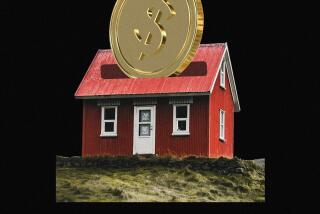38.7% of Latino Children in U.S. Lived in Poverty in ‘84, Congressional Study Finds
- Share via
WASHINGTON — Of the nation’s Latino children, 38.7% lived in poverty last year, their plight worsening in comparison with other racial groups, a congressional study reported Saturday.
The study by the Congressional Research Service said that 2.3 million Latino children lived in poverty in 1984, up from 2.2 million the year before. Overall last year, the number of poor children dropped by about half a million, the report said, but the number of Latino poor--like the number of black poor--continued to rise. Black children in poverty numbered 4.1 million in 1983 and 4.2 million in 1984, and the poverty rate among these children was 46.1% in both years.
The 1984 rate of 38.7 of every 100 Latino children living in poverty was 84% above the level for all of the nation’s children. Nearly one-sixth of the 12.9 million total of poor children nationwide are Latinos, the report said.
Many in California
Not surprisingly, California, with almost a third of the U.S. Latino children, accounted for 25.2% of those living in poverty in 1979--the latest year available for state figures. Another 25.2% of the nation’s poor Latino children were in Texas and 16.3% were in New York.
The new report is a supplement to a May study of poor children entitled, “Children in Poverty,” and officials called it the most comprehensive economic comparison to date of Latino and non-Latino children under age 18. Unlike the earlier report, the new study does not mix Latinos with either the white or black populations.
The report was requested by Democratic Reps. Harold E. Ford of Tennessee, Charles B. Rangel of New York and Bill Richardson of New Mexico. “We knew from the earlier report that the economic recovery was simply not reaching black children,” Ford said. “We now know that Hispanic children are also being left behind.”
The new report said that, in 1984, 21% of all of the nation’s children lived in poverty. Compared to the 46.1% poverty rate of non-Latino black children, the figure was 13.1% among the non-Latino white children. The Latino percentage of 38.7% fell in between the two, the study said.
Economic Handicaps
Poverty increases among Latino children have paralleled the group’s rise in the U.S. population and reflect economic handicaps stemming from poor education and lack of proficiency in English, researchers said. Wide differences were found in poverty levels among Latinos themselves, with Puerto Ricans generally being the poorest and Cubans the least poor.
Between 1975 and 1983, the population of Latino children grew 15%, the study notes, while the non-Latino population under 18 declined 6%. During the same period, Latinos’ share of all poor children rose from 13.5% to 15.6%.
By 1983, the nation’s child population was 62.1 million: 5.7 million Latinos; 9.2 million blacks and 45.1 million whites. Other groups made up the rest.
The government’s poverty line figure varies according to family size. For example, in 1983, the year used for much of the report, a non-farm family of four was considered poor if it had a cash income below $10,178. The 1984 poverty level was $10,613.
Significant Differences
The study found significant differences between the social characteristics of poor Latino children and those of other groups.
For example, the report said the Latinos “are much more likely” to live in families with fathers present than are non-Latino black children. Poor Latinos lived in homes with fathers 54% of the time, compared to 25% for blacks. Sixty percent of poor whites lived in homes with fathers.
Such data suggests that, even though the fathers are present, their lower levels of education and, in some cases, lack of proficiency in English mean that they earn lower wages than blacks, researchers said.
More to Read
Sign up for Essential California
The most important California stories and recommendations in your inbox every morning.
You may occasionally receive promotional content from the Los Angeles Times.













